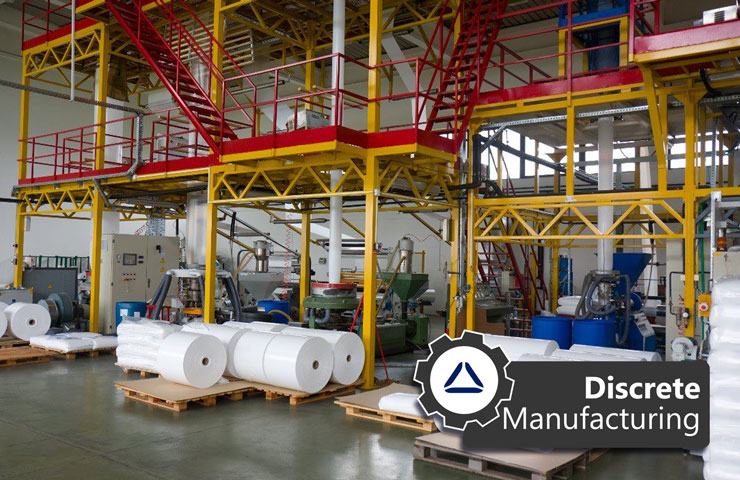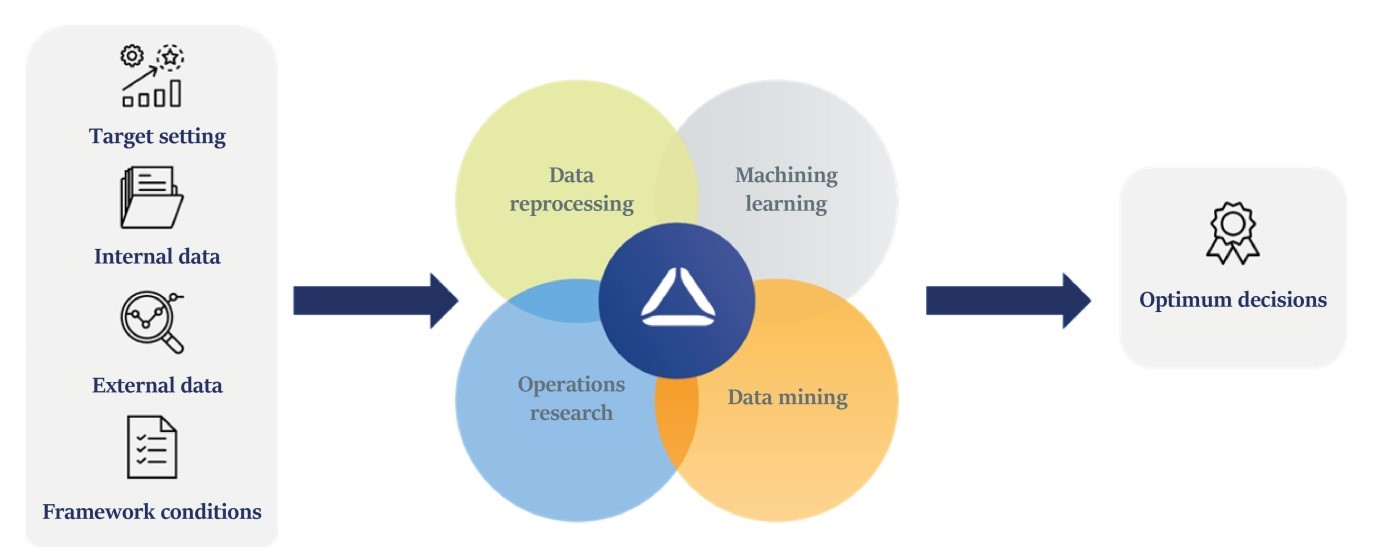Reducing Production and Warehouse Costs with Optimum Batch Sizes

How much should you produce of a particular product in one batch? How high can the stock level be? Does it make sense to increase the machinery capacity? Challenging questions like these can only be answered reliably with intelligent data utilization. Traditional models for batch size optimization (such as the formulas developed by Harris and Andler) produce initial indications, but they cannot provide comprehensive optimization taking into account all relevant articles, costs, and restrictions. The processes are simply too complex.
Mapping costs realistically
Selecting the correct batch size is an important decision for manufacturing companies. Small batch sizes, for example, reduce warehouse costs, but the set-up costs increase. An important prerequisite for optimum results is models that map the full complexity of the procurement, production, and storage process. The aim may be to minimize the total costs of purchasing, production, set-up, and storage across all articles. The mathematical model formulations take into account the constraints – such as machine capacities, requirements, or special guidelines.
Simulating and optimizing scenarios
Parameters such as set-up, purchasing, production, or warehouse costs per site or the various requirements can vary in the optimization models. Depending on the underlying data, tried-and-tested, innovative forecasting and pattern recognition methods from areas such as data science or artificial intelligence, such as machine learning, are used to determine the values.
If required, it is also possible to perform simulations based on altered parameters and to compare the results with those of conventional decisions. This is useful not only for batch size optimization, but also for strategic issues. For example, when it comes to purchasing new machines or expanding warehouse capacity.
The interaction between machine learning and mixed-integer optimization paves the way for intelligent decision-making. Short run times for algorithms of just a few minutes mean quick reactions to changes and simulations of different scenarios – for example, different storage capacities.
Expert knowledge is crucial for advanced analytics
In these times of Industry 4.0 and Big Data, mathematical models and algorithms are also becoming increasingly important for supply chain optimization. When it comes to model development, there is a difference between:
- Information that is derived from data (this includes demand forecasts, determined using conventional methods and pattern recognition based on artificial intelligence) and
- Information that is specified by an external source (for example, rigid restrictions in order to adhere to machine and storage capacities) zu unterscheiden.
Even though artificial intelligence has evolved in recent years and can now identify complex patterns and interdependencies, experts continue to play a key role. They are the ones who develop and validate the relevant restrictions and guidelines for the models. Ultimately, the operational value of the technology depends primarily on the quality of the data, the choice of process, and the extent to which it is possible to translate expert knowledge into mathematical models.
Different solution methods are used for this depending on the data quality and the complexity of the model. Sometimes multi-level general and detailed planning is required for optimization. The methods used to estimate the demand for individual production generally differ from those for series or variant production.
Optimum interaction between models and algorithms is a prerequisite to finding the best solution. A suitable software partner and consultant should be able to:
- Check the quality of recorded data
- Take over data pre-processing
- Transfer data to models
- Optimize the data model
- Use the results to derive specific decision proposals

How to optimize the entire supply chain
Batch size optimization can be an initial step to identify and tap into saving potential with intelligent data utilization. Since production process are often tied up in complex supply chains, the supply chain should be considered as a whole. If applicable, transport and distribution costs in the context of network optimization must also be taken into account in order to minimize the overall costs and to economize in an ecologically sustainable manner. We have already successfully implemented batch size and network optimization in customer projects.
The competitive pressure due to digitization and Industry 4.0 is due to accelerate over the coming years. COSMO CONSULT Data Science does everything to ensure that your company comes out on the winning side at the end.
Give us a call or write us an email. Download our white paper for more information.
We will help you with every step on your way to completely digitized and optimized production processes.
